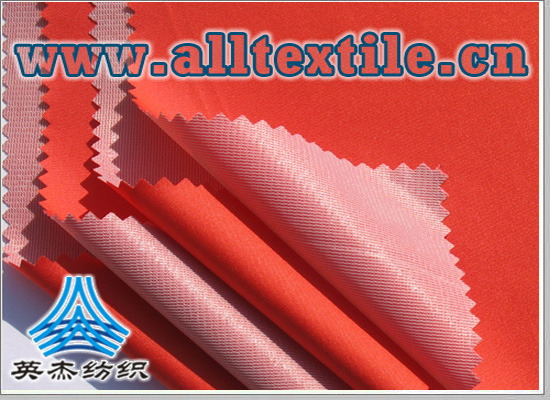Why is glass transparent? The production process and raw materials of Boli are…
Why is glass transparent? The production process and raw materials of BoLi include…
Why is glass transparent?
An important reason: no matter how solid the substance is, if you look at it from the inside of the atom, it is actually empty. Because inside an atom, the combined volume of the nucleus and electrons is less than one-hundredth of a billionth of the volume of the atom. Moreover, there is no evidence that the nucleus and electrons cannot be penetrated by photons! Therefore, transparency is normal!
To understand this complex problem, we must first understand the following question: Why are some substances opaque?

For opaque substances, we can divide them into four major categories:
1. Opaqueness due to the blocking effect of free electrons: This is the reason why metals are opaque.
2. Opaqueness caused by substances that can absorb light: The excitation energy of electrons in the molecules of this type of substance is relatively low, just within the visible light range, and the molecules often have structures of benzene rings, benzoquinones, benzidines or other conjugated systems. This structure can reduce the excitation energy of electrons, making it easy for electrons to transition and absorb the energy of photons. This way the light is absorbed.
3. Opacity caused by the destruction of the structure of transparent substances. For example, glass is transparent, but glass powder is opaque; ice is transparent, but ice becomes opaque when it is smashed. If the structural characteristics of a substance do not conform to 1 and 2, then it can pass light, but if there are many small gaps in its structure, then it is white. This is why white objects are opaque.
4. The result of a mixture of reasons 1, 2, and 3. The opacity of many objects in reality is caused by this reason.
If a substance has neither free electrons nor easily excited electrons in its structure, and the structure of the substance is very tight, there are not many pores and other conditions. Then the material can pass through photons, that is, it is transparent. So the glass is transparent!
The main raw materials for glass production are as follows:
1. Sandstone: Sedimentary rock formed by cementing quartz (SiO2) particles
2. Silica sand: natural sand with quartz as the main component
3. Feldspar: The general name for the brick aluminate feldspar minerals containing potassium, sodium, and calcium.
4. Limestone: calcium carbonate rock
5. Dolomite: a compound salt rock of calcium carbonate and magnesium carbonate
6. Fluorite: a natural mineral of calcium fluoride
7. Soda ash: anhydrous sodium carbonate
8. Glauber’s salt: anhydrous sodium sulfate
9. Carbon powder: powder with carbon as the main component
In addition, there are melt retardants, clarifiers, oxidants, reducing agents, colorants, decolorizing agents, etc.

Production Process:
production material
The main raw materials for glass production include glass formers, glass modifiers and glass intermediates, and the rest are auxiliary raw materials. The main raw materials refer to the oxides, intermediate oxides and extra-network oxides introduced into the glass to form a network; the auxiliary raw materials include clarifiers, fluxes, opacifying agents, colorants, decolorizing agents, oxidants and reducing agents, etc.
production method
Glass
Mainly includes: ① Raw material preprocessing. Crush the massive raw materials (quartz sand, soda ash, limestone, feldspar, etc.) to dry the wet raw materials, and remove iron from the iron-containing raw materials to ensure the quality of the glass. ②Batch preparation. ③ Melting. The glass batch materials are heated at high temperature (1550~1600 degrees) in a tank kiln or crucible kiln to form a uniform and smooth shape.Quantitative analysis and titration operation; divided into acid type and alkaline type. The piston must be original; the leaking one cannot be used; it cannot be heated; the alkali solution cannot be stored for a long time; the alkaline tube cannot be placed with titration liquid that acts as a rubber.
Microburet 1 2 3 4 5 10ml Micro or semi-micro analysis titration operation Piston type only; other precautions are the same as above
Automatic burette: automatic titration; can be used for operations where the titrant needs to be isolated from air. In addition to the same requirements as the general burette, pay attention to the storage of the set. In addition, it must be equipped with a double-connected ball for pumping.
Pipette accurately removes a certain amount of liquid. Do not heat; do not break the upper end or tip.
Graduated pipettes for accurately pipetting various amounts of liquids Same as above
The short-shaped weighing bottle is used for measuring weight loss on drying or drying benchmarks in an oven; the tall-shaped bottle is used for weighing benchmarks and samples. Do not close the ground plug tightly for baking, and the ground plug must be original.
Reagent bottles: narrow-mouth bottles, wide-mouth bottles, lower-mouth bottles. Thin-mouth bottles are used to store liquid reagents; wide-mouth bottles are used to store solid reagents; brown bottles are used to store reagents that are easy to decompose when exposed to light. They cannot be heated; they cannot be placed inside the bottle. Prepare a solution that releases a lot of heat during the operation; keep the ground stopper as it is; use a rubber stopper for bottles containing alkali solution to avoid being unable to open for a long time.
Dropper bottle holds the reagents to be added dropwise, same as above
Funnel: The long-neck funnel is used for quantitative analysis and filtration of sediment; the short-neck funnel is used for general filtration.
Separating funnel: Dropping spherical, pear-shaped, cylindrical shape to separate two immiscible liquids; used for extraction, separation and enrichment (mostly pear-shaped); adding liquid during preparation reactions (mostly spherical and dropping funnels). Ground cock Must be original, leaky funnels cannot be used.
Test tubes: ordinary test tubes, centrifugal test tubes for qualitative analysis and testing of ions; centrifugal test tubes can be used to separate solutions and precipitates by centrifugation in a centrifuge. Test tubes made of hard glass can be heated directly on a flame, but cannot collect cold; centrifuge tubes can only be heated in a water bath
(Nessler) colorimetric tubes for colorimetric and turbidimetric analysis cannot be heated by direct fire; non-standard ground plugs must be original; be careful to keep the tube wall transparent and do not use decontamination powder to wash it
Condensing tube: Straight spherical serpentine air condensing tube is used to cool the distilled liquid. The serpentine tube is suitable for condensing low boiling point liquid vapor. The air condensing tube is used to condense liquid vapor with a boiling point above 150°C. It cannot condense cold or heat; pay attention to the following. Cooling water enters the mouth and water flows out of the upper mouth
The suction filtration bottle receives the filtrate during suction filtration. It is a thick-walled container and can withstand negative pressure; it cannot be heated.
Watch glasses, beakers, funnels, etc. cannot be heated directly, and the diameter should be slightly larger than the container being covered.
Mortar: Used for grinding solid reagents and samples; cannot grind substances that interact with glass; cannot impact; cannot bake
The dryer keeps dried or burned materials dry; it can also be used to dry a small amount of prepared products. Put color-changing silica gel or other desiccants at the bottom, and apply an appropriate amount of Vaseline on the grinding opening of the cover; do not put red-hot objects into the hot Always open the lid after removing objects to prevent the lid from jumping or being unable to open the lid after cooling.
Vertical fusion glass funnel filtration must be suction filtration; it cannot collect cold or heat; it cannot filter hydrofluoric acid, alkali, etc.; wash it immediately after use
Vertical fusion glass crucible The precipitate that needs to be weighed during drying in gravimetric analysis is the same as above.
Standard grinding port combination instrument. Preparation and separation in organic chemistry and organic semi-micro analysis. No lubricant is required at the grinding port; no skew pressure is allowed during installation; must be purchased with the required equipment.
Development Quotes







